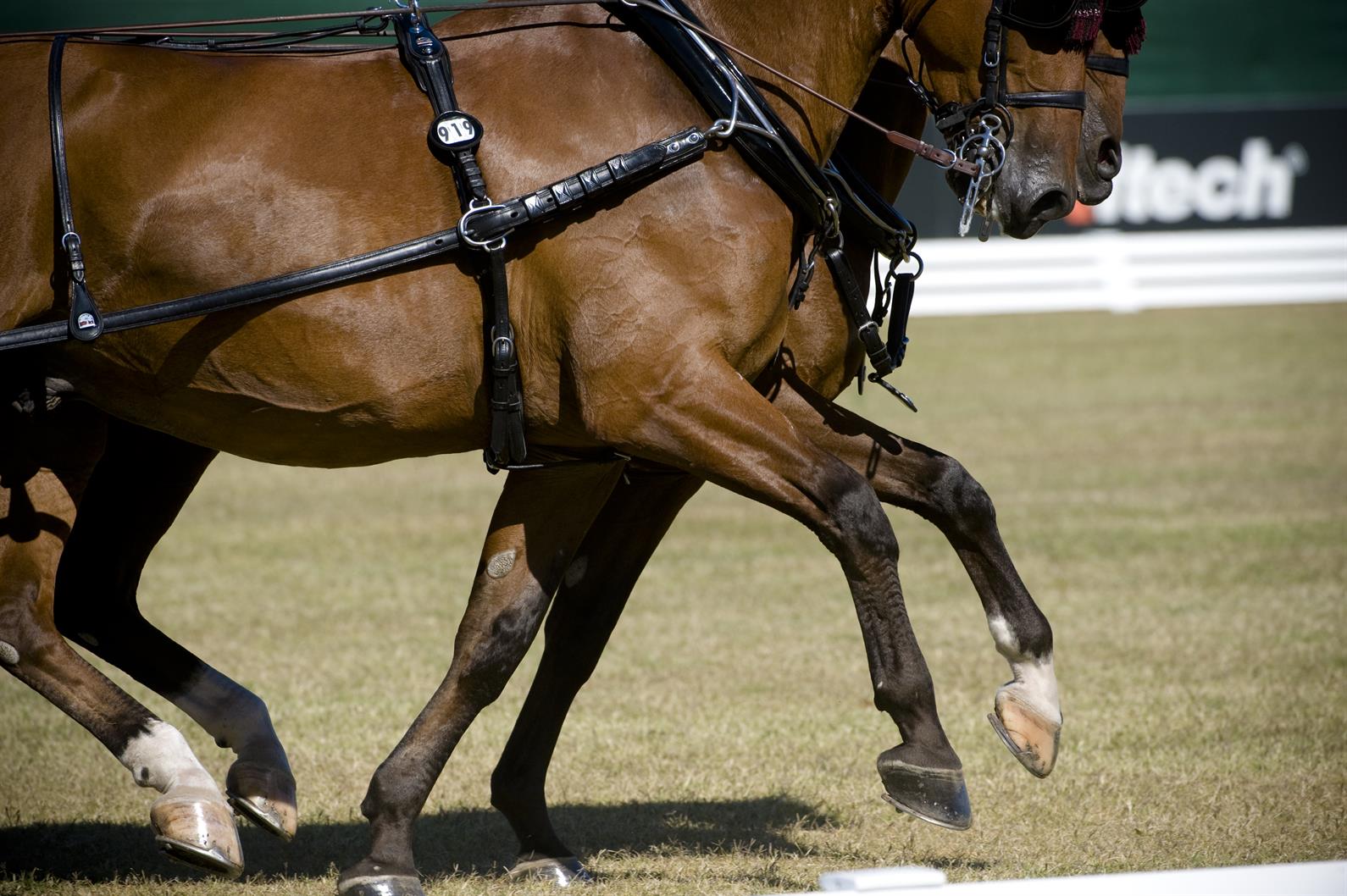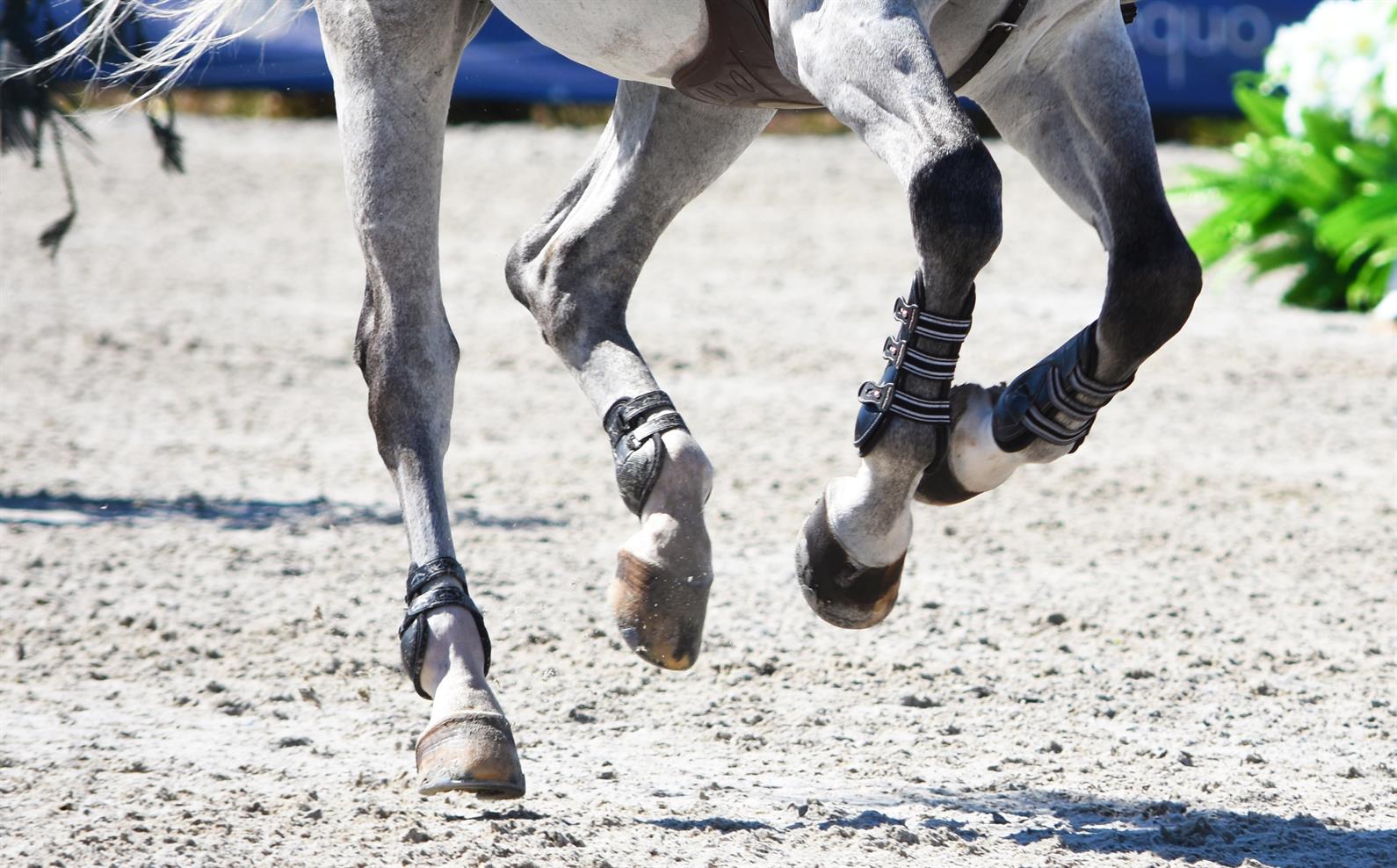Joint health is key to any horse’s performance, whether he’s a trail horse or an Olympic-level athlete. A number of factors can contribute to arthritic changes in the equine joint, and there are some things you can do to promote your horse’s joint health.
We asked Dr. Laura Werner at the Hagyard Equine Medical Institute for her advice on management strategies that can help protect equine joints.

Photo: Shannon Brinkman
1. Start with balanced nutrition.
Good joint health starts with good nutrition, especially when the horse is young, when the cartilage in his joints is forming. And throughout a horse’s life, maintaining a proper calcium/phosphorus balance (no more than 1:1 to 2:1 calcium to phosphorus, ideally, says Werner) in your horse’s diet can help support joint health.
“It doesn’t hurt to have your horse on a joint supplement like chondroitin and glucosamine,” Werner added. “There’s less data on the oral absorption of hyaluronic acid and whether it’s helpful or not, but we know hyaluronic acid is a key component of joint fluid and is key to joint health.”
A recent study at Texas A & M University also suggested that resveratrol—a compound found in red grape skins and red wine—might help improve hock lameness in performance horses.
“There are new developments all the time,” said Werner, so it’s worth asking your vet about current research. And don’t forget to consult your vet and make sure you know the ingredients of any supplement you administer; even “natural” supplements can sometimes result in a positive drug test at competitions (for a list of forbidden substances, see US Equestrian’s Guidelines for Drugs and Medications).
2. Consider your horse’s age when setting a training regimen.
Particularly for young horses in training or already showing, it’s also helpful to avoid a performance regimen that might be suitable for an older horse but could add excess trauma to younger joints.
“It’s helpful not to have too much repetitive trauma on the joints at an early age,” said Dr. Werner. “Sometimes we see more problems with early repetitive trauma in horses that are working at two, for example. Don’t work a horse harder than he really needs to be working. As they say, every horse only has so many jumps in it, and you want to avoid excess wear and tear.”
3. Look for low-impact exercises.
“Uphill work versus trotting on the flat puts less stress and strain on the front limbs, for example, and things like underwater treadmills or swimming can help prevent stress and strain on the joints,” Werner said. “Walking is great exercise that also doesn’t add a lot of impact. That can add to their conditioning and their top line without pounding on their joints a lot.”

Photo: US Equestrian
4. Watch those hooves.
“Proper shoeing and hoof care are important,” said Werner. Poor trimming and shoeing can lead to extra stress on joints, so be sure to work with your farrier to maintain your horses’ hooves well. And be aware of the footing your horse is working on, too—excessively hard footing, for example, can mean more trauma on joints during work.
5. Keep them fit and moving.
“Low-impact activity is always good for horses, as it is in people,” Werner said. “It’s good to keep moving, to keep the muscles fit to support the joints, and it’s good for them not to be overweight. That’s good advice across species!”
6. Ask your veterinarian if your horse is a candidate for injections.
Therapeutic options for certain joint issues can include polysulfated glycosaminoglycan (PSGAG). "It's one of the building-blocks of cartilage," explained Werner. "It's indicated if there's a joint injury. For example, in young horses who have an infected joint as a youngster or who have a chip or OCD [osteochondritis dissecans] lesion taken out, it can help that cartilage heal. It's also used in older horses if there's joint damage."
Treatment typically would involve a series of intramuscular injections every four days for a total of seven treatments once or twice a year. "There's no withdrawal time, because it's a normal constituent of joints so it's an option if you're in the midst of show season, and it treats more than one joint," Werner added. "It's not a steroid but it has anti-inflammatory effects, even though it's a normal constituent of cartilage."
Learn more about PSGAG in this video from Adequan®.
If the horse is lame and your vet finds signs of joint inflammation or osteoarthritis via radiographs or ultrasound, joint injections might be another option. A number of different products are available, including some like stem cell therapy and IRAP®? [interleukin-1 receptor antagonist protein] that are derived from the horse's blood; hyaluronic acid, which is a component of joint fluid; and steroids.
"There are a number of treatment options, and it's important to go over them with your veterinarian to determine what is best for your horse and your situation," Werner said.
Want articles like this delivered to your inbox every week? Sign up to receive the Equestrian Weekly newsletter here.
This article is original content produced by US Equestrian and may only be shared via social media. It is not to be repurposed or used on any other website than USequestrian.org.

